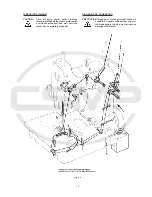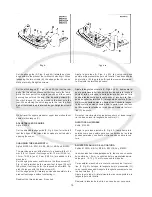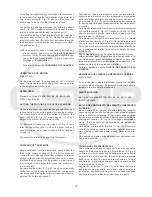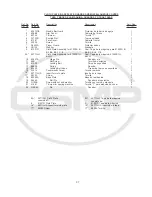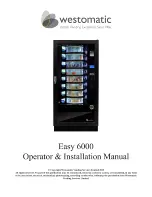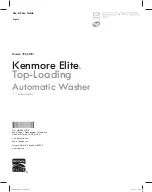
29
For setting the upper feed dog with respect to the slot ends
in the presser foot and the tooth spaces of the lower feed
dog, loosen screw (D, Fig. 18) and turn drive lever (E)
accordingly to the front or rear. Retighten screw.
For setting the small gap between the feed dogs loosen
nut (F, Fig. 20). Turning in screw (G) increases the gap,
turning it out decreases the gap. Retighten nut (F).
For matching the upper feed dog travel with the lower feed
dog travel loosen screw (A, Fig. 21). Moving the ball link in
the slot of rocker lever (B) to the front decreases the upper
feed dog travel, moving it to the rear increases the travel.
Retighten screw (A).
HINT: In general the travels of lower and upper feed dog
are set equally. Depending on the fabric to be sewn
however, it may be necessary to set a slightly longer
upper feed dog travel in order to get a proper end
matching of the fabric plies.
Also refer to paragraph
CHANGING STITCH LENGTH.
UPPER FEED DOG MOTION
Style 81500A
On this style the upper feed dog does not lift on its return
travel. It works as a swinging upper feed, moving parallel
to the height of the presser foot.
UPPER FEED
Standard on
Styles 81500B, B1H, B2, BA, BA1H, BA2,
81500C and 81500E
SETTING THE MOTION OF THE UPPER FEED DOG
On the return travel, the upper feed dog should lift so high
that no fabric will be pulled against the sewing direction.
The motion should be set so that the rear four teeth of the
upper feed dog (B, Fig. 19) remain approx. 1/3 of their
height in the presser foot slots when lifting.
For adjustment loosen the two screws (H, Fig. 19) and
raise the supporting yoke (J) when the upper feed dog
should lift more or lower it when it should lift less. Retighten
screws (H).
On request an alternating upper feed is available.
PRESSER FOOT PRESSURE
Rotate handwheel until the lower feed dog is below the
throat plate. Loosen knurled nut (A, Fig. 22) and turn out
T-screw (B) until it does not exert any pressure on the leaf
springs. In this position, the pressure exerted on the presser
foot should be so strong that the presser foot bottom and
the front end of the presser foot tongue rest squarely on
the throat plate.
By relocating the collars (C, Fig. 23) which serve as a leaf
spring rest, on the left and right presser bar, the pressure
can be changed. Raising the collars increases the pressure,
lowering the collars decreases it.
Para ajustar el diente alimentador superior con respecto a los
extremos de las ranuras en el pie prensatelas y los espacios
entre los dientes del diente alimentador inferior, hay que sol-
tar el tornillo (D, Fig. 18) y girar la palanca de accionamiento
(E) hacia adelante o atrás respectivamente. Apriete de nuevo
el tornillo.
Para ajustar la pequeña brecha dentro del diente transporta-
dor, suelte la tuerca (F, Fig. 20). Girando el tornillo (G) hacia
adentro aumenta la brecha, hacia afuera la disminuye. Ase-
gure la tuerca (F) de nuevo.
Para ajustar el movimiento del diente superior con el diente
inferior, suelte el tornillo (A, Fig. 21). Moviendo la junta esfé-
rica en la ranura de la palanca de accionamiento (B) hacia el
frente disminuye el movimiento del diente alimentador supe-
rior, moviéndolo hacia atrás lo incrementa. Apriete de nuevo
el tornillo (A).
DATO:
Generalmente, los movimientos de ambos dientes
están ajustados igual. Dependiendo del tipo de tejido a co-
ser, sin embargo, puede ser necesario ajustar un poco mas
largo el movimiento del diente superior para poder tener un
acabado parejo en las laminas de material.
Refiérase también al párrafo
AJUSTE DEL LARGO DE LA
PUNTADA.
MOVIMIENTO DEL DIENTE ALIMENTADOR SUPERIOR
Estilo 81500A
En ésta máquina el diente alimentador superior no se eleva
en su recorrido de regreso. Se balancea moviéndose parale-
lamente a la altura del pie prensatelas
DIENTE SUPERIOR
Normal en los estilos 81500B, B1H, B2, BA, BA1H, BA2,
81500C y 81500E
AJUSTE DEL MOVIMIENTO DEL DIENTE ALIMENTADOR
SUPERIOR
En su movimiento de regreso, el diente alimentador superior
debería moverse tan alto que ningún material sea arrastrado
contra la dirección de costura. El movimiento debe ser ajus-
tado de manera tal que los últimos 4 dientes traseros del diente
alimentador superior (B, Fig. 19) mantengan aproximada-
mente 1/3 de su altura de las ranuras del pie prensatelas
cuando se levanta.
Para ajuste, suelte los dos tornillos (H, Fig. 19) y levante el
soporte (J) cuando el diente alimentador superior deba subir
mas, o bájelo cuando deba bajar menos. Asegure los torni-
llos (H).
Bajo pedido un diente alimentador superior alternando tam-
bién esta disponible.
PRESION DEL PIE PRENSATELAS
Gire el volante hasta que el transporte inferior se encuentre
debajo de la plancha de la aguja. Afloje la tuerca (A, Fig. 22)
y afloje el tornillo (B) hasta que no haga más presión contra
los muelles. En esta posición la presión al pie prensatela
debería ser tal que la planta del pie prensatela y la parte
delantera de la lengüeta del pie prensatela se apoyen plano
en la plancha de la aguja.
Regulando los anillos (C, Fig. 23) en la barra derecha e
izquierda del pie prensatela, que sirven como soporte para
los muelles, se puede variar la presión. Subiendo los anillos
aumenta la presión, bajándolos disminuye la presión.
Summary of Contents for 81500B2
Page 8: ...8 INSTALLATION INSTALACION...
Page 10: ...10...
Page 21: ...21...
Page 23: ...23 Fig 10 Fig 11 Fig 11 A Fig 11 B Fig 11 C Fig 12...
Page 25: ...25...
Page 28: ...28...
Page 33: ...33 VIEWS AND DESCRIPTION OF PARTS VISTAS Y DESCRIPCIONES DE LAS PARTES Y PIEZAS...
Page 34: ...34...
Page 36: ...36...
Page 38: ...38...
Page 40: ...40...
Page 42: ...42...
Page 44: ...44...
Page 46: ...46...
Page 48: ...48...
Page 50: ...50...
Page 52: ...52...
Page 54: ...54...
Page 56: ...56...
Page 58: ...58...
Page 60: ...60...
Page 62: ...62...
Page 64: ...64...
Page 68: ......

